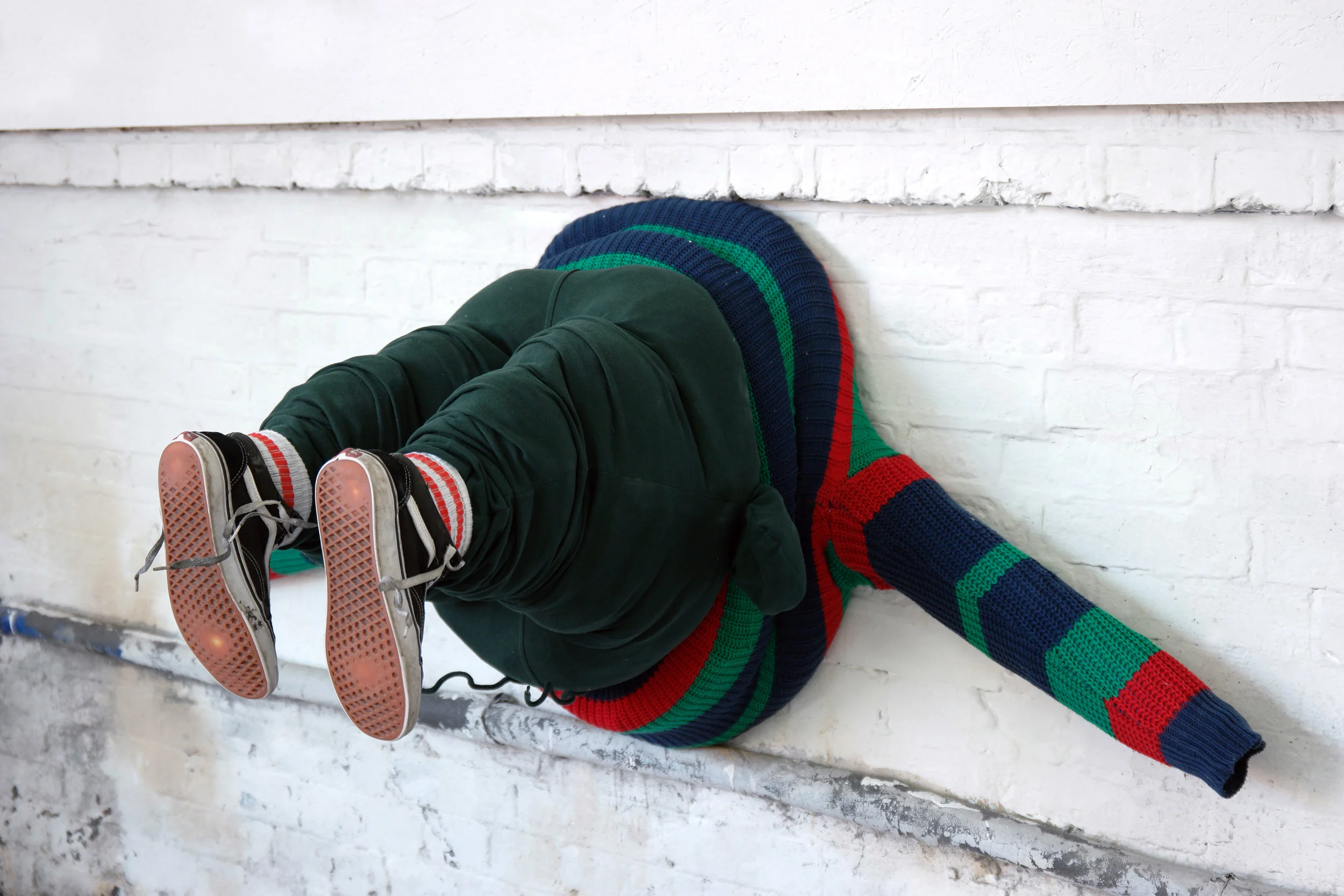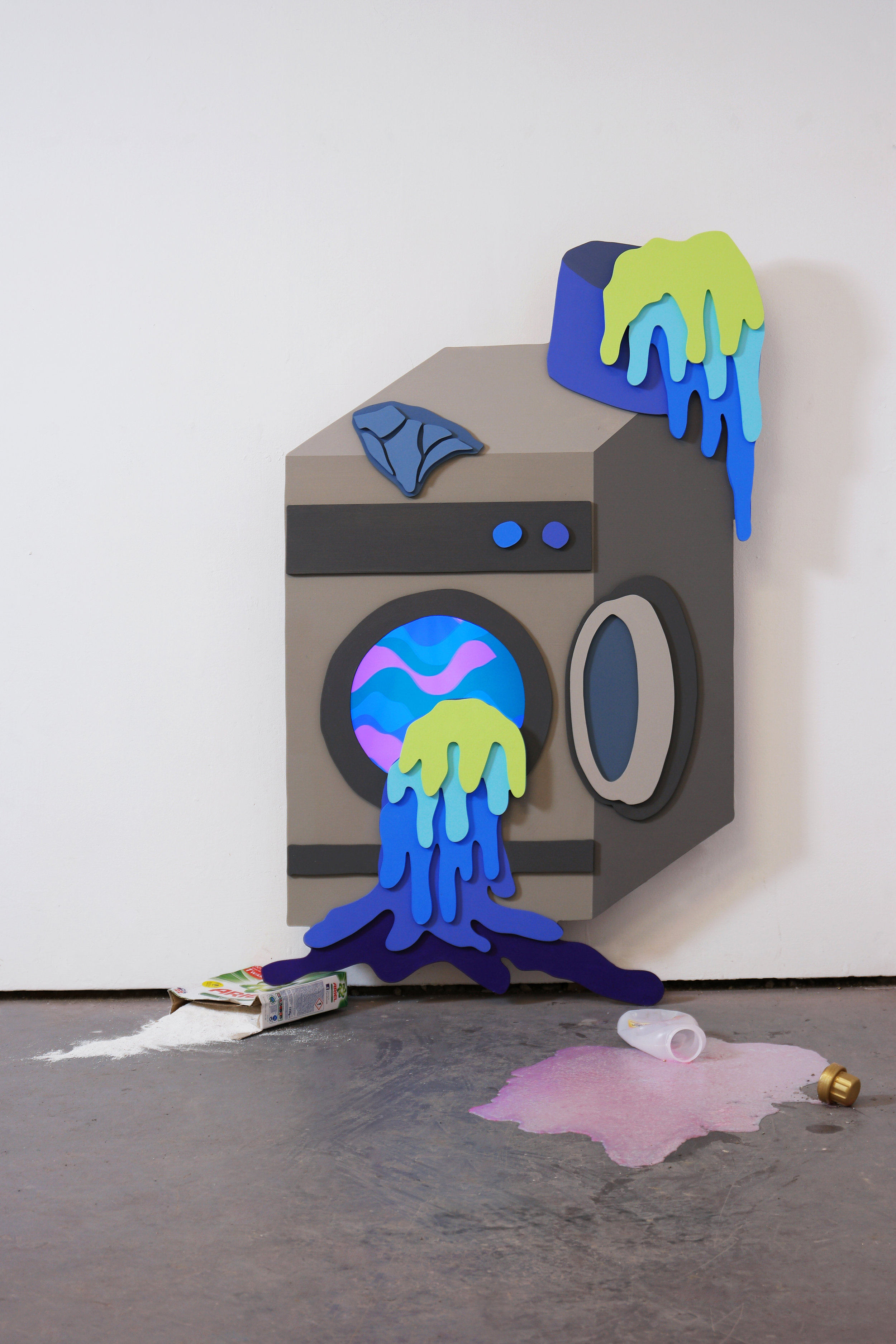Shinuk Suh

“The cartoonish imagination expressed in my work portrays a deliberate avoidance of an untruthful and absurd reality…”
Interview by: Jillian Knipe
Could you tell us a bit about yourself and your background? Where did you study?
I was born and raised in Seoul. My family is strict Christians and out of three siblings, I am the last born. When I was at university in Seoul, my major was not Fine Art. According to my father's will, I had majored in theology. However, theology did not fit my aptitude and I double majored in hotel management. The youth in Korea must serve in the military for two years, and I was no exception.
I was working as a military investigator. At that time, I realized that I was interested in more creative work, and I started to draw an illustration. After the military service, I was working with a publishing company as a freelance illustrator, and I published two fairytale books. I started to think that it might be necessary to study Fine Art. Whilst contemplating studying abroad, I decided to study in London following the recommendation of a close personal tutor.
I studied BA Fine Art at Central Saint Martins College of Arts and Design, and I am currently studying MFA Sculpture at Slade School of Fine Art.
‘Complexity’ (2017)
Your work bridges art and cartoonish humour, while pointing towards a range of grim subjects such as Nebuchadnezzar’s reign of construction and destruction, the sugar industry’s dark history and schizophrenia. How does your process juggle this tension between the political, the personal and the humorous?
The narrative that is revealed in most works has much to do with my background and growth. I spent my childhood in the atmosphere of high economic growth in Korea, the remnants of a military regime (that has lasted for 32 years), and the atmosphere of a strict Christian family.
I experienced many social and political ironies in the process. And I tried to be a human being that society and my parents wanted, but it was too big a burden for me. At that time, animated movies were the only way to escape that reality. I felt pleasure in seeing the ludicrous and masochistic behaviour of the characters in the cartoons, and it allowed me to vicariously experience spiritual deviations and psychological rewards that I could not do in reality. And I was always fascinated by the utopia presented in the cartoons, and dreamed of the fantasy all the time.
When I was an adult and worked as an investigator in the military I questioned a lot of criminals, and the majority of them were suffering from mental illness. And as I looked at their crime processes and results, I found that they resembled animated movie scenes that I saw when I was a kid. Paradoxically, their exaggerated behaviours expressed the absurd reality of modern people. And I found that the behaviour of the characters delicately represented the mental illness that humans suffer. We see tragedy as a comedy, and on the contrary, we see comedy as a tragedy.
The cartoonish imagination expressed in my work portrays a deliberate avoidance of an untruthful and absurd reality, and at the same time, depicts an intricate contextual expression of the difficulty in distinguishing between comedy and tragedy - by expressing such reality as exaggerated and ridiculous.
‘Arrogance of Nebuchadnezzar’ (2017)
‘An Unsound Slumber’ (2018)
‘I Don't Want To Do Laundry’ (2018)
With exception, you mostly present work as a double take. Often, one take is the actual object/s while the other is a mirrored film of the object/s. Can you describe how you intend for these to play off one another?
As technology has developed, we have been able to see images in a variety of ways. Bigger and sharper TV screens, and VR; a state-of-the-art technology that allows people to experience life in a virtual world created by computers. Now the images you see on the screen become more real than the reality. In a world where fiction is overwhelming, I have come to wonder why humans are so obsessed with fiction.
I applied sharper and more beautiful images to the TV screen than are visible in reality, and compared them with real objects. And through my research on reality and the unreal, I explored my questioning of ‘how real is reality?’.
It reflects my experience of not being able to distinguish between reality and the world of fiction in the animations from when I was a child.
Tell us a bit about how you spend your day / studio routine? What is your studio like?
I usually work late at night in the studio. It is my daily routine to starting work at 3ish until dawn. In fact, I am unfamiliar with getting up early. I think I am very sick of waking up and going to bed early, from when I was in military service. I am currently sharing a studio in Bromley by Bow with my friend who is a painter, but I usually work in the uni studio. It is a little hard for me to work in a crowded space. So I like to work in the late afternoon when everyone is away.
Before I arrive at the studio, I go to a cafe and drink coffee and watch people. In fact, when I look at a person, many ideas come to mind. And I arrive at the studio and make conversation with my friends and appreciate their work. I change into work clothes, play music with headphones, and work alone.
‘Better Luck Next Time’ (2018)
How do you go about naming your work?
I usually cite the Bible, psychoanalytic dictionaries, my favorite novels, and sentences or words that I’ve memorized from cartoon movies. And I write a word or sentence that I thought of by chance in a note and research it. For a long time, I look at the search results and change sentences or words in my way. Most often, I decide on the name after completion of the artwork, but in fact this process is always very difficult for me. The title sometimes changes the mood of the work, so I must always be careful when deciding on it.
What artwork have you seen recently that has resonated with you?
I am a big fan of Bruce Nauman. It was quite difficult to see his work again after I was first shocked upon seeing his work at the Dia:Beacon gallery in New York. But not long ago I saw his solo show at Tate Modern, and I visited it three times. Two of his works (‘Raw Material Washing Hands’ and ‘Good Boy Bad Boy’) were a great inspiration for me. I watched the videos for more than 10 minutes. I am fascinated by the story of the nature of man he speaks about in his work.
Is there anything new and exciting in the pipeline you would like to tell us about?
Recently I am interested in kinetic artwork, but am still learning about programming which I am unfamiliar with. Many people have been helping me to evolve my understanding in this area.
I have worked very hard this summer to embody my new ideas for the Interim show at Slade which will open at the end of September. I am very excited - but scared too, because the work is yet to be finished. But I hope it will be good artwork.
Publish date: 02/10/2018
All Images are courtesy of the artist




